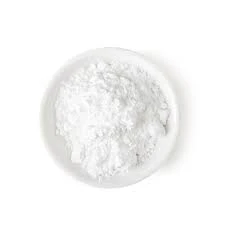Chemical Use in Effluent Treatment Plants (ETPs)
Effluent Treatment Plants (ETPs) play a crucial role in managing wastewater generated from various industrial processes. The primary objective of these facilities is to purify wastewater to meet environmental standards before it is released back into natural water bodies or reused for industrial purposes. A significant aspect of the ETP process involves the use of various chemicals, which are critical for the efficient treatment of effluent. This article explores the types of chemicals commonly used in ETPs, their functions, and the importance of their careful selection and application.
Types of Chemicals Used in ETPs
1. Coagulants and Flocculants Coagulation and flocculation are essential processes in wastewater treatment. Coagulants, such as aluminum sulfate (alum) and ferric chloride, help in the aggregation of suspended particles. Once these particles are flocculated, they form larger clusters called flocs that can be easily separated from the water. The proper selection of coagulants is vital to address the specific characteristics of the wastewater being treated.
2. pH Adjusters Maintaining an optimal pH level is critical in wastewater treatment. Chemicals like sulfuric acid or sodium hydroxide are often used to adjust the acidity or alkalinity of the effluent. A balanced pH enhances the effectiveness of other chemicals and processes, such as coagulation and biological treatment.
3. Disinfectants Pathogens in wastewater pose health risks when treated effluent is released into the environment. Disinfectants, such as chlorine, ozone, and ultraviolet (UV) light, are employed to eliminate harmful microorganisms. The choice of disinfectant depends on various factors, including the nature of the effluent, regulatory requirements, and cost considerations.
4. Defoamers Foaming can hinder the treatment efficiency in ETPs. Defoamers, or anti-foaming agents, are used to reduce or eliminate foam caused by organic compounds in wastewater. Silicone-based or non-silicone-based defoamers can be added to prevent operational challenges associated with excessive foam.
5. Nutrient Additives Biological treatment processes, such as activated sludge systems, require nutrients like nitrogen and phosphorus to promote microbial growth. Chemicals such as ammonium nitrate or urea are introduced to ensure optimal growth conditions for microbes, facilitating the breakdown of organic matter.
chemical used in etp

Importance of Chemical Selection and Application
The careful selection and application of chemicals in ETPs are vital for several reasons
- Environmental Compliance Regulatory agencies impose strict limits on the quality of treated effluent. The appropriate use of chemicals ensures that the effluent meets these standards, thereby protecting the environment and public health.
- Operational Efficiency The right chemical selection can significantly enhance the efficiency of the ETP processes. It can lead to reduced treatment time, lower energy consumption, and decreased operational costs.
- Safety and Handling Many of the chemicals used in ETPs can be hazardous if not handled properly. Therefore, it is crucial to ensure that plant personnel are trained in the safe handling and application of these chemicals to minimize risks.
- Cost-effectiveness Chemical costs can represent a significant portion of the operational expenses of an ETP. By optimizing the use of chemicals through careful selection and dosing, plants can achieve cost savings while maintaining treatment efficacy.
Conclusion
The use of chemicals in Effluent Treatment Plants is indispensable for achieving effective wastewater treatment. From coagulants and disinfectants to nutrient additives and pH adjusters, these chemicals play a pivotal role in ensuring that effluent is treated to meet environmental standards. As industries continue to evolve and regulatory pressures increase, the development and application of innovative chemical solutions will be critical in enhancing the performance and sustainability of ETPs. Understanding the dynamics of chemical interactions within wastewater is essential for operators to achieve their treatment objectives effectively and responsibly.

